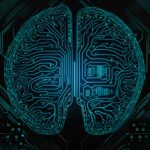Prompt Engineering

Craft high-performing AI prompts, align AI tools with business goals, and drive real-world impact.

Craft high-performing AI prompts, align AI tools with business goals, and drive real-world impact.

Learn to design, assess, and deploy Responsible AI systems with a focus on generative models.

Master core machine learning concepts—without coding—to interpret models, calculate key metrics like precision and recall, and select appropriate algorithms for real-world scenarios.

Build AI-powered assistants, master prompt engineering, and identify high-impact use cases while developing a strategic roadmap to drive innovation across your organization.

This course provides executive government leaders with the tools to harness artificial intelligence (AI) for the benefit of their organizations using a holistic perspective on AI technology integration.

The Johns Hopkins Healthcare Systems Engineering and Thinking course provides participants with a deep understanding of today's ongoing healthcare challenges and the tools and strategies they need to develop high-impact, long-lasting systems-based solutions.

This course provides senior leaders with a comprehensive approach to adopting AI technology. It provides a framework to unpack the question, “How do we turn our organization’s AI strategy into action?”

This workshop introduces state-of-the-art methods for developing testing and evaluation plans for AI-driven systems and addresses novel challenges these systems present.

This course aims to provide senior government leaders with a comprehensive approach to adopting AI technology. It will allow leaders with a framework to unpack the question, "How do we turn our organization's AI strategy into action?" While not a prerequisite, it is beneficial if the organization's executive leader has established an AI strategy having completed the workshop Leading Data and AI-Enabled Organizations: For Executive Leaders (US Government).

In this comprehensive course, participants will gain a deep understanding of neural network architectures and essential model regularization techniques.